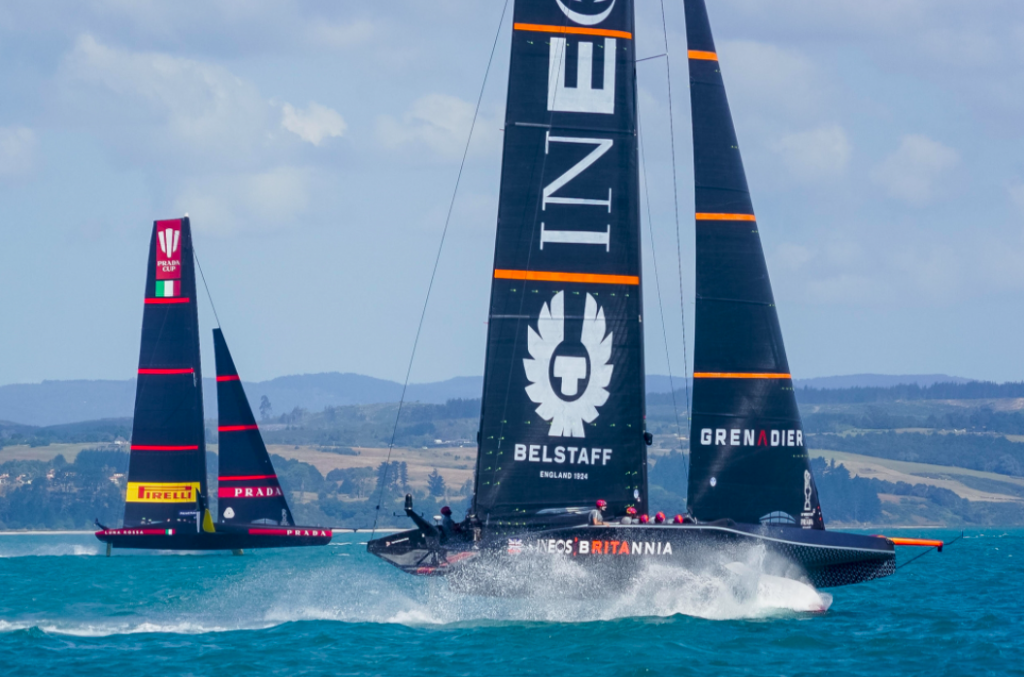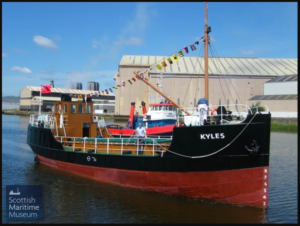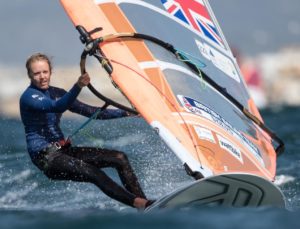Are challengers rising to challenge?

Whether it be the challengers or the defender, the speed at which the America’s Cup fleet is developing has already taken the experts by surprise, says Matt Sheehan writing for the America’s Cup.
The two-day practice race programme this week provided an opportunity to see what all the teams had been up to over the Christmas break and how they had adapted their sailing. And from the moment they arrived on the racecourse, it was clear that plenty had changed and that the competition is already heating up.
The first day’s racing saw American Magic line up against Luna Rossa Prada Pirelli and both boats arrived sporting physical changes.
For the Italians, the most obvious difference was the new cockpit fairings. With wind speeds over the deck reaching more than 60knots at times, reducing aerodynamic drag is a big deal. This modification appeared to provide the evidence.
For the Americans, the hull now has a newly extended skeg that runs deeper than their original – a change that is believed to increase the aerodynamic efficiency of the hull by making it easier to seal it against the water’s surface, in technical speak, the skeg helps to create a better endplate effect. But the Americans’ sail plan had changed too with a mainsail that was scalloped on the leech, its trailing edge, an unusual and distinctive change. Interestingly, on the second day’s racing, the team was back to using a more conventionally styled mainsail. Striking the balance between testing and training appeared part of the two-day strategy.
For the first day, the breeze was in the 16-18 knot range, a step up from the conditions in the ACWS and following a number of practice starts, the pair completed their first practice lap of the course. Here, the pace was fast and close. Before Christmas Luna Rossa had shown how potent they were in light winds and had indicated that it was the stronger winds that they felt they needed to develop in particular. This race seemed to suggest that their work was already delivering results.
INEOS Team UK was also open about its need to climb the learning curve following its disappointing performance in the ACWS. When the the boat re-appeared from a busy break it appeared to be sporting a new mast and new mainsail. And while this was unlikely to be the only technical difference, its performance on the first day of the practice session was an impressive step-up. More power, more performance, and a renewed confidence to get into the mix in the pre-start, the team delivered tactical moves that they and others know that they are capable of.
In addition, the British were taking on the home team, winners of the PRADA America’s Cup World Series, Emirates Team New Zealand. So while this might have been a tough datum, the confident new British performance demonstrated how far the team had come in just a few weeks.
But the big surprise came when the defender nosedived and capsized in an unforced error shortly after gybing. A sharp reminder of the thin line that all of the teams tread. Thankfully no one was hurt and righting the AC75 took just a matter of minutes. And while the team decided to withdraw from the rest of racing for the day, it was back up and running in time for the racing on the following day.
The second day of racing saw technical tweaks and changes across the fleet but the biggest difference was a drop in the breeze to around 10-13 knots, a small difference perhaps for conventional racing yachts, but for these machines, a significantly different set of conditions.
The pre-start action was stepped up another notch or two as teams practiced and refined their set play moves along with their responses to those of their opponents. Once again, the intensity increased.
And while the detail of every tack, gybe, luff and dip will be analysed in detail by the teams, the most surprising thing for observers is how hard these boats are being pushed in sessions that are a warm up for the Prada Cup that starts on Friday 15th January.
For all of the detailed analysis that will take place by pundits and teams alike, the overall conclusion from this session is that the challengers have become closer in performance and reduced the gap between themselves and the defender. So, if they are racing like this now, how intense will the action be when the points are for real?
Read more about the America’s Cup and Prada Cup.










